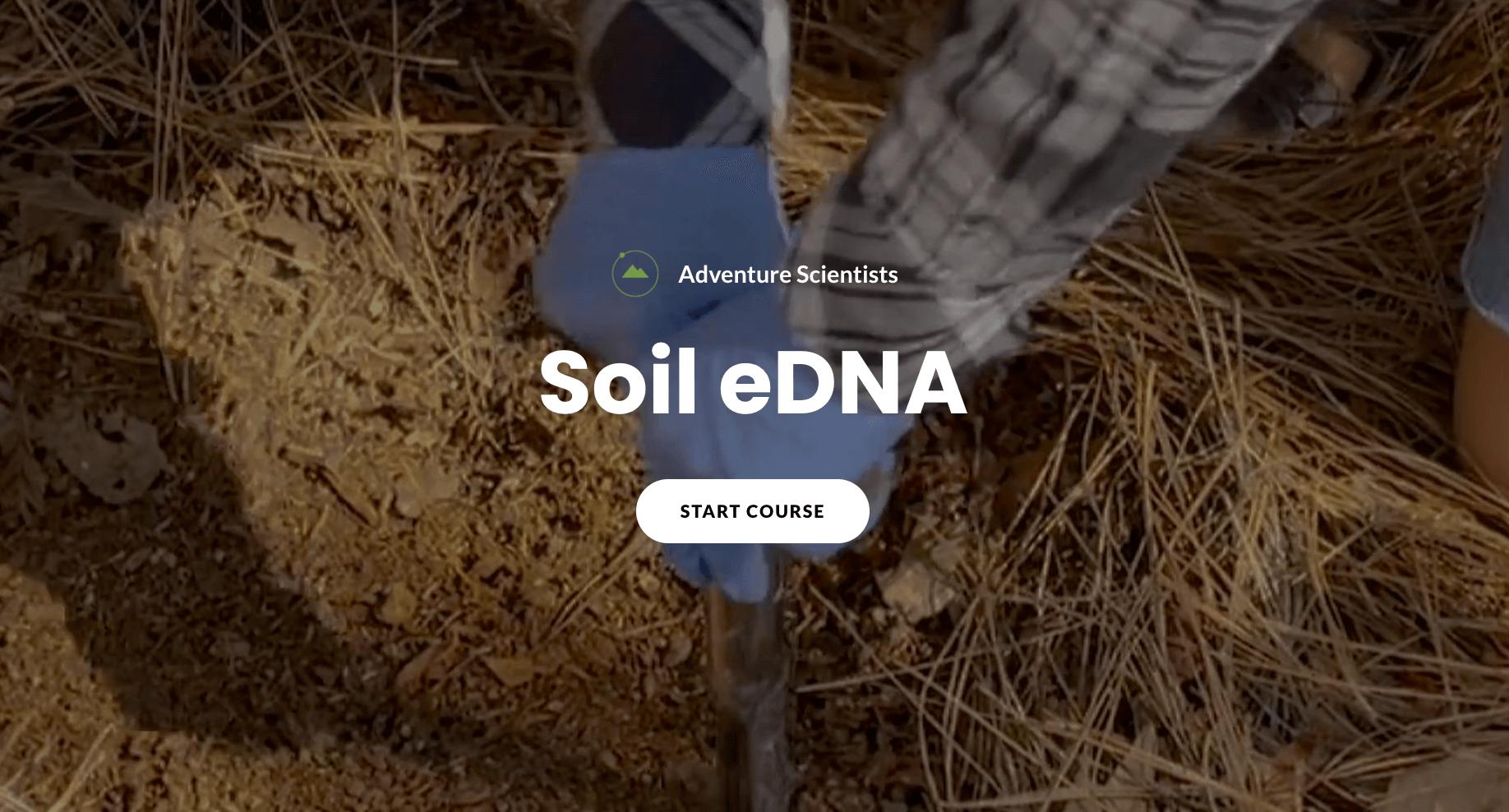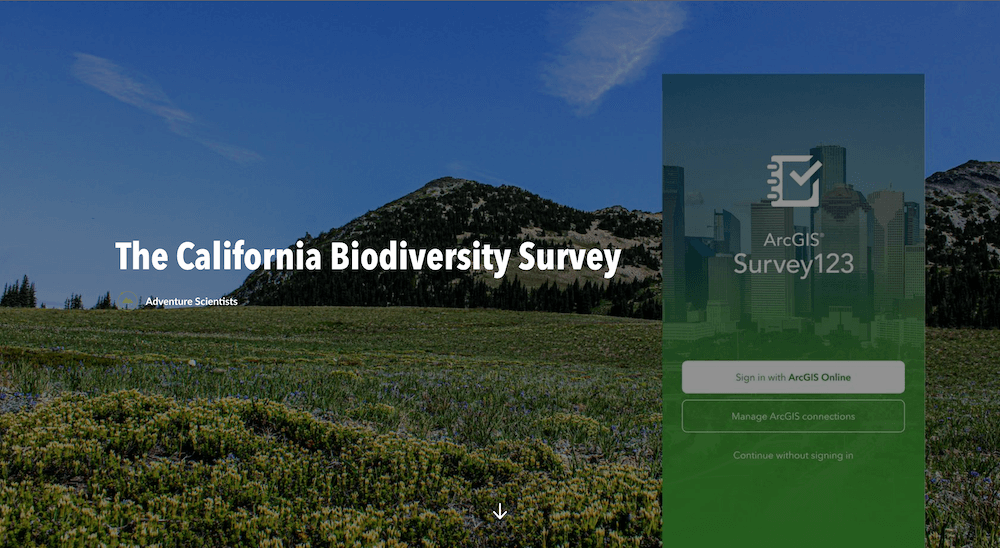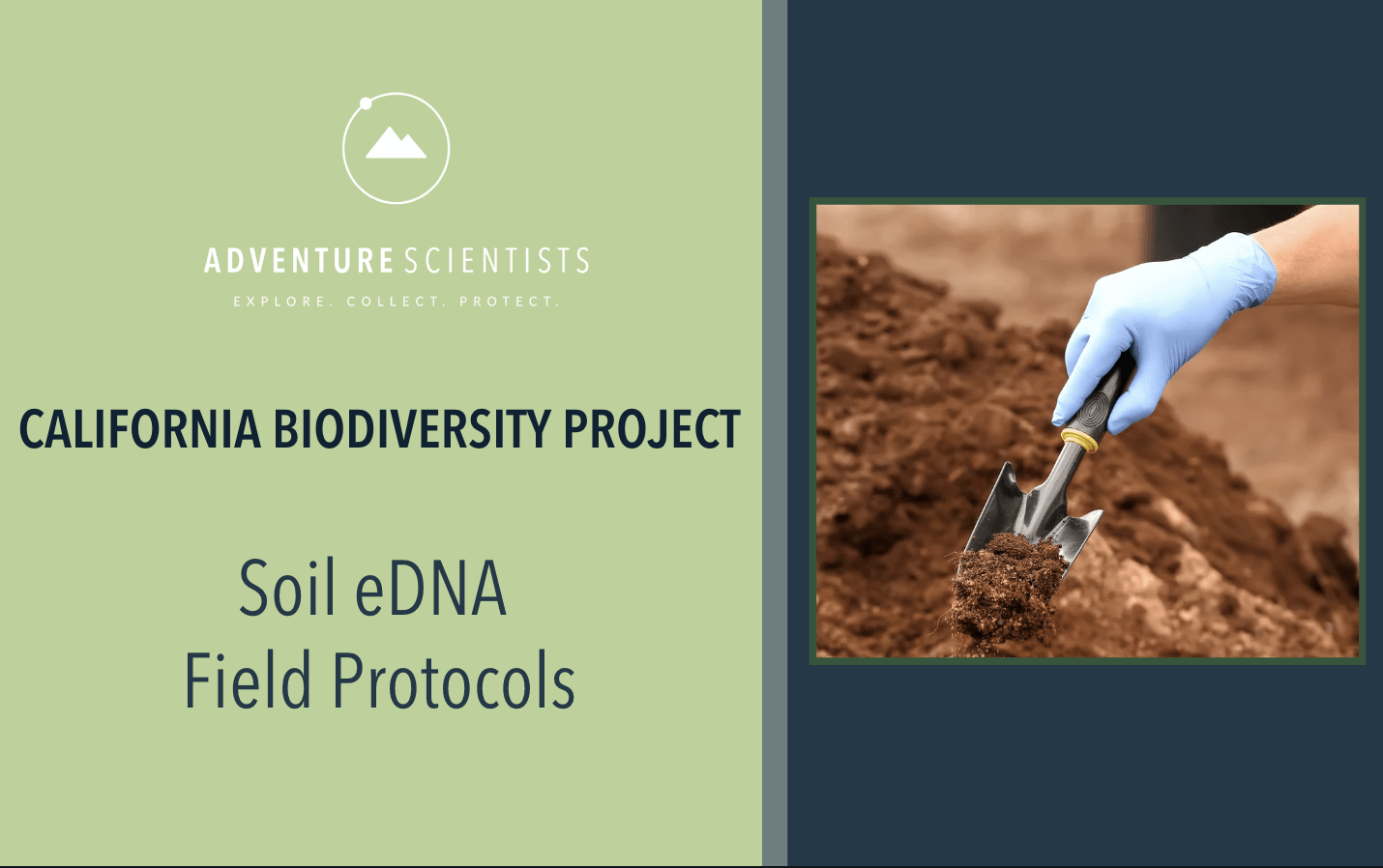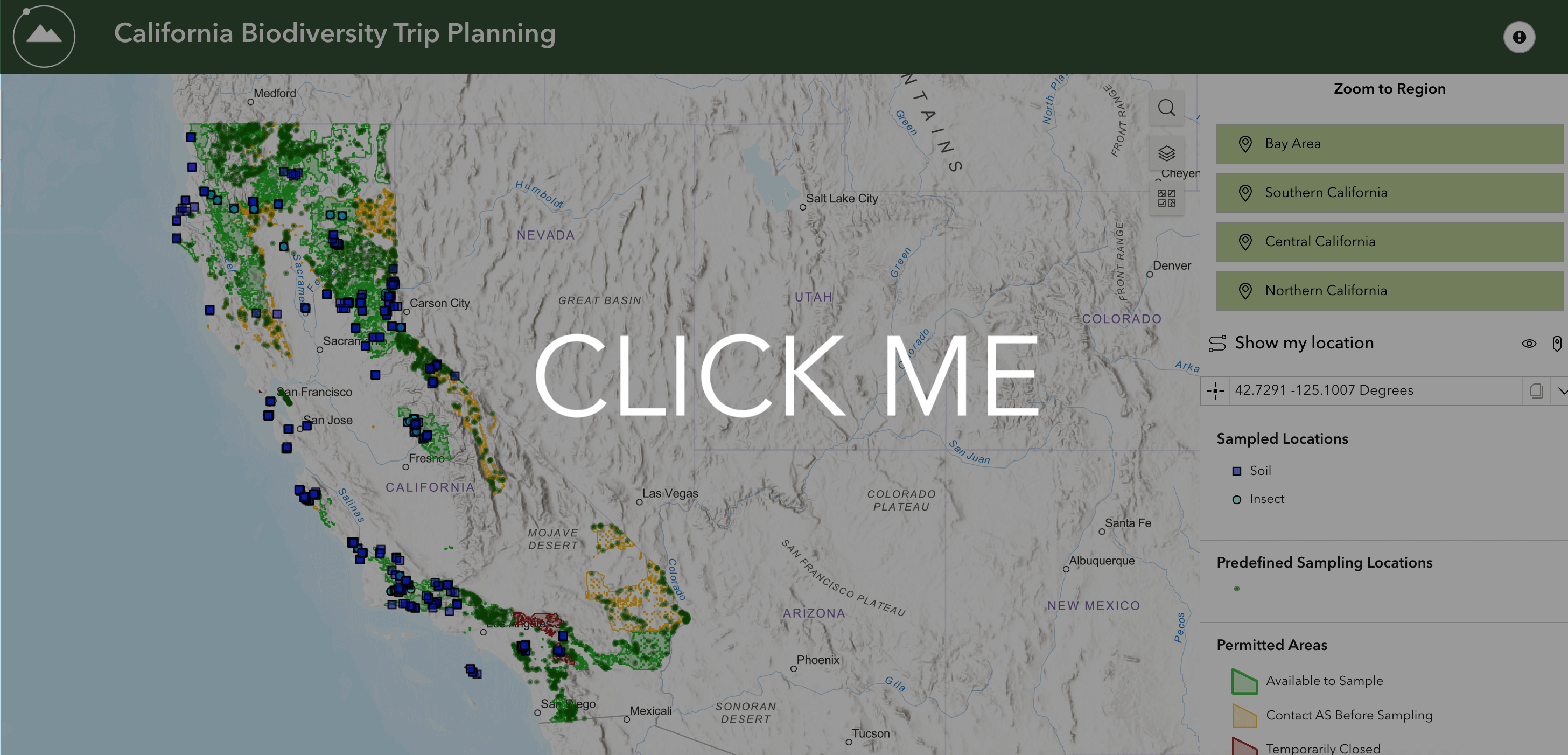CALIFORNIA BIODIVERSITY
VOLUNTEER HOMEPAGE
Welcome, Adventurers!
Thank you for being a part of this project, California needs our help and we are grateful to have you as part of this mission. We can’t wait to have you out on your adventures with science as your companion!
Have you filled out the project application? If not, start there before continuing!
Check out the steps below to ensure you have completed everything you need to be successful
Training
Looking for the Insect Collection training? Email biodiversity@adventurescientists.org for info!
Trip Planning: Where will you go?
There are two options for selecting a location to collect soil samples for this project.
- Public Lands: Use the map to assess a location where you would like to collect data. Permits are required to collect data samples for this project, therefore you may only select an area that is highlighted in the map. Based on your selection, the appropriate permit for this land will be provided to you with your gear shipment.
- Private lands: You may sample on private, undisturbed lands with permission from the owner. What is undisturbed land, you might ask? Any land that is 20ft or more away from a road, 20ft+ away from a compacted trail, and not agricultural land (nothing sprayed with pesticides). For example: land 20 ft away from a farm or vineyard is perfectly acceptable!
Please note that gear shipment takes approximately 1 week, so you will need to make sure to choose with enough lead time for your gear to arrive
Need help deciding where to go? Join Sam and Ricky for live trip planning sessions on Zoom. Every Tuesday and Thursday from 12:30 PM – 1:00 PM Pacific Time.
Gear Provided by Adventure Scientists
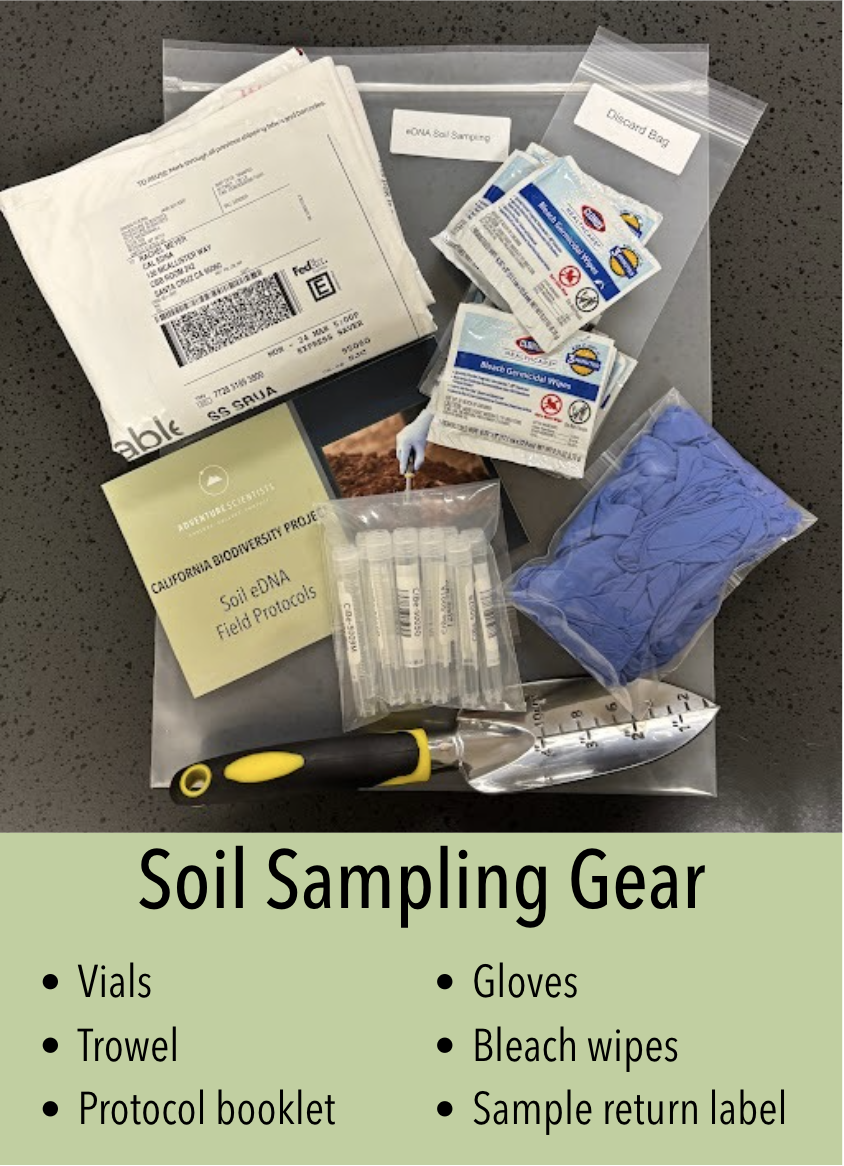
Support
You are all set to go out and collect samples! Do you have any questions or need assistance? We have resources available to help.
- Check out our FAQ below for common questions
- Reach out to us at biodiversity@adventurescientists.org
- OR Schedule a time slot during our office hours!
Once you’re back from the field and you’ve collected observations and data, make sure to: submit your samples via post, and check your outbox for any unsent data records!
FAQs
Where do I go to collect samples?
Great question! Use our Trip Planning Map found above on the volunteer homepage to find approved sampling locations near you.
How do I get signed up to collect insects?
After you collect 20 soil samples, you’ll unlock access to our insect project! We’re looking for super volunteers committed to fieldwork. Once you qualify, we will email you the link to the insect volunteer homepage. From there, the process is just like soils: complete the insect training, plan your trip, request your new gear, download your permit, and head out into the field!
How do I request more soil sampling vials?
Out of gear? No problem! Just fill out this additional gear request form:
https://www.tfaforms.com/5177573
If you already have a trowel, select the option to request only vials, bleach wipes, and gloves.
What do I do with my samples after I collect them?
Please ship all completed samples as soon as possible.
Storage Guidelines (if you can’t ship right away):
- Soil Samples: Store in a refrigerator or a cool, dark place for up to 2 weeks.
- Insect Samples: Store in a cool, dark place for up to 2 weeks. Do not refrigerate insect samples.
After 2 weeks, DNA may begin to degrade and the samples may no longer be usable.
Shipping Instructions:
You’ll receive one pre-paid shipping label addressed to the correct lab for each project. You can also find the shipping address on the final page of your protocol booklet.
- Soil Samples: Ship to Rachel Meyer, CaleDNA
- Insect Samples: Ship to Austin Baker, Natural History Museum of Los Angeles
What do I do with my gear after the project?
Soil Gear:
Good news — you get to keep the trowel! To help reduce shipping and carbon emissions, we’re not asking volunteers to return trowels after sample collection. Please be sure to use all the collection vials in your kit, as we will not be receiving them back in the office.
Insect Gear:
Your gear kit includes a return shipping label. Please use it to send the aspirator back to the Adventure Scientists office in Bozeman at the address provided.
What do I do if my sample barcode isn’t scanning in the app?
If it still won’t scan, the issue may be with your Survey123 settings. The default setting should work with our barcodes, but if you’ve changed it for another project, you can update it by following these steps:
- Tap “Scan the barcode on the sample bag or vial” on the first page of the survey as you would to scan a sample
- Tap the gear icon in the top right corner
- Make sure Code 128 is selected as the barcode type
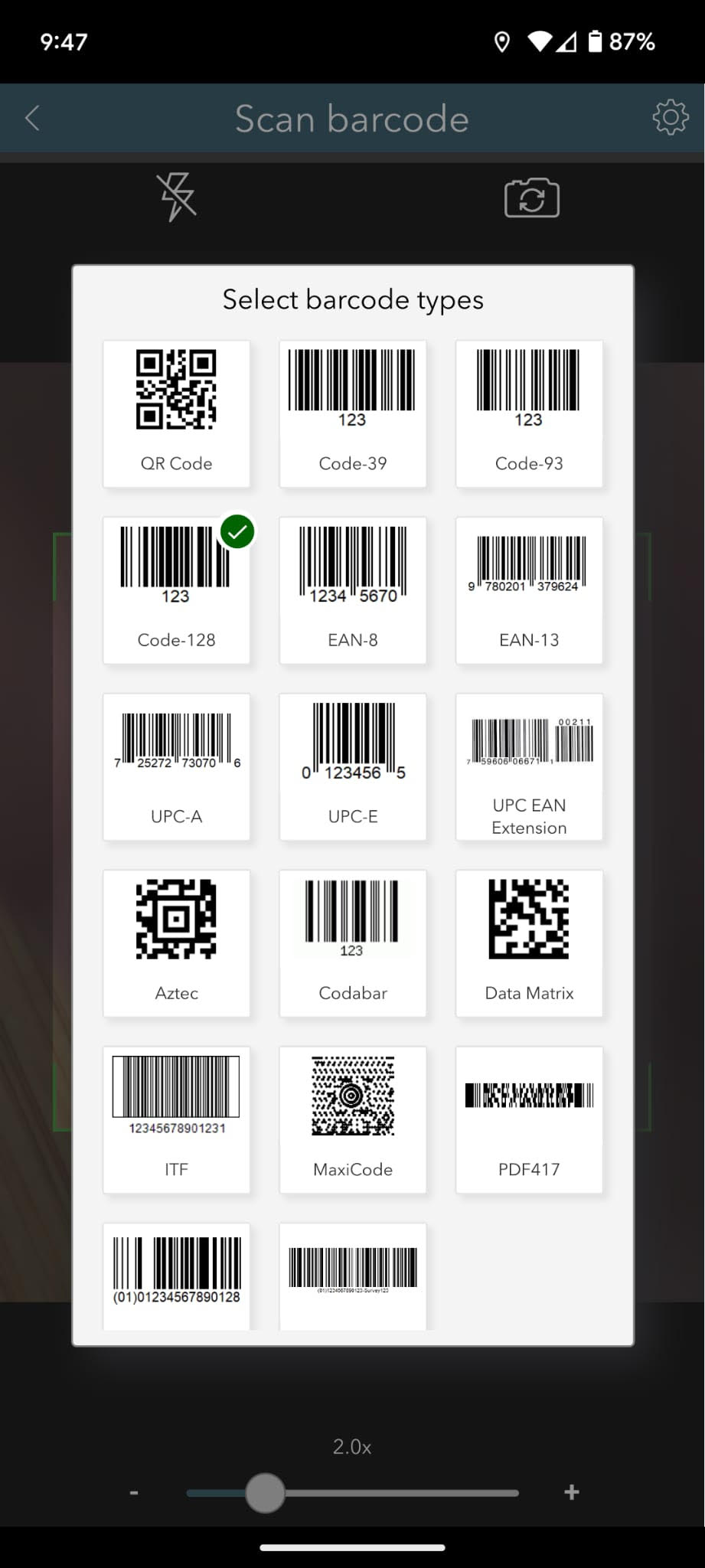
Where can I find the permit for my sampling area?
If you’re collecting on public lands listed on our Trip Planning map, you’ll find a downloadable permit in the drop-down menu when you click on your selected area. A printed copy of the permit will also be included in your gear kit.
Please note: Certain areas have special permit requirements. These may include being accompanied by a park employee, contacting specific individuals before sampling, checking under vehicles for wildlife, and more. You’ll find all applicable requirements in the pop-up box when you click on an area in the trip planning map. See below for an example.
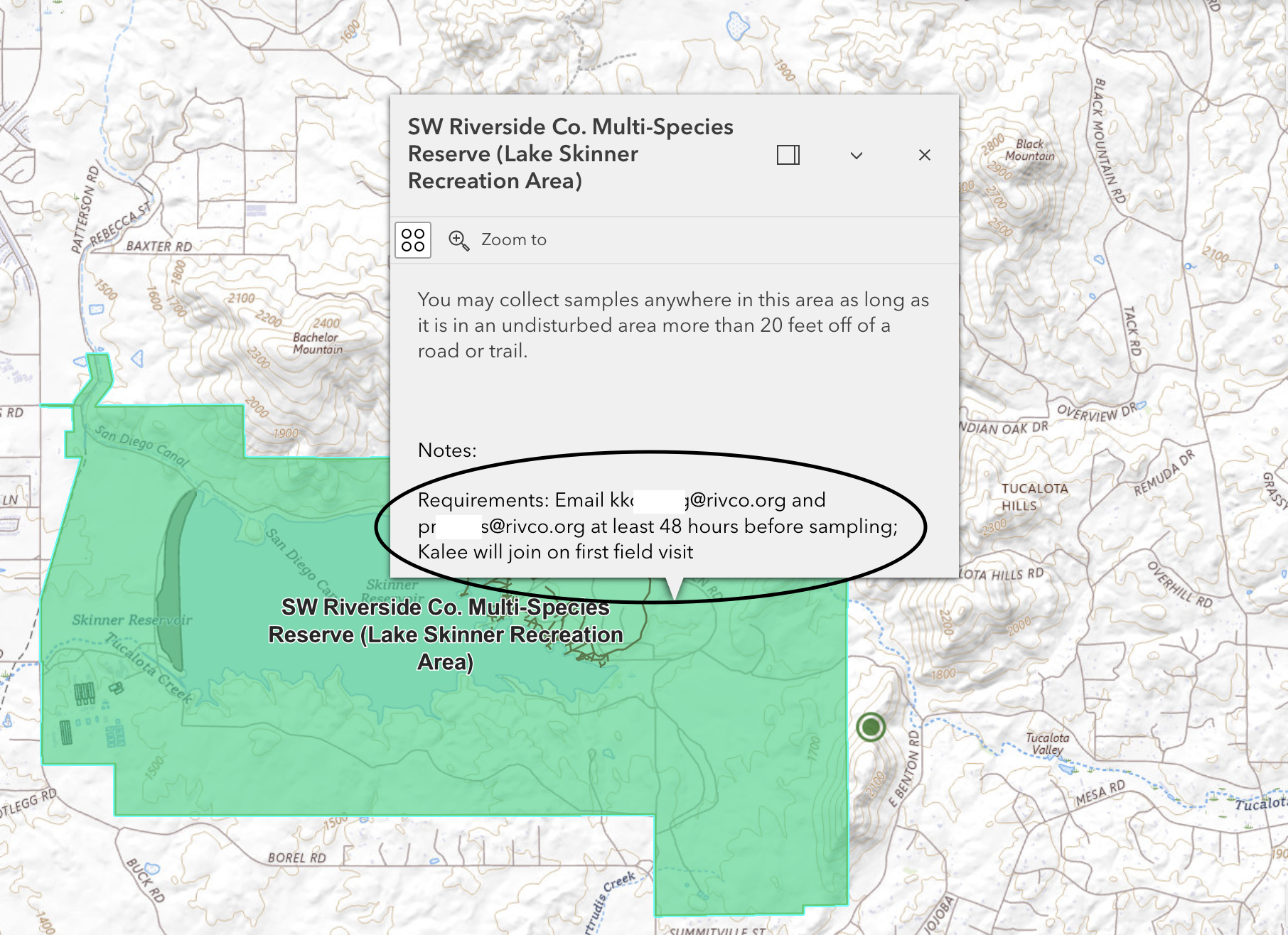
Insect Collection: An additional permit is required for all insect sampling. You can download that permit here, or find it on the insect homepage
How do I collect a good insect sample?
Great question! Some helpful tips for collecting good insect samples
- Sweep for at least 20 minutes – Insect collection takes time and patience!
- Target insect hotspots – Sweep through tall grasses, fields with wildflowers, and open understory areas with ferns or low shrubs.
- Use your aspirator often – You can aspirate multiple times throughout your sweep session or whenever your net starts to fill with debris. This will maximize the insects you can collect!
- Don’t overlook the tiny ones – Aspirating tiny pieces of micro-debris could snag you some small insects you normally would miss.
- Avoid sharp foliage – Try to steer clear of bushes or undergrowth with thorns or burrs, as these can rip your net and let insects escape.
Can I go into the field alone to collect data?
We strongly encourage volunteers to head into the field with a partner.
Not only is it safer, but most protocols are easier to complete with an extra set of hands. Having a field buddy is highly recommended.
Can I train my friends to collect data?
No, Adventure Scientists is solely responsible for the training of each of our volunteers. Your friends may help you take a GPS point or photos, but if they want to be more involved in sample collection, they’ll need to complete the online training. The training ensures that volunteers are capable of collecting high quality surveys.
When will I receive the gear and supplies?
After completing the training, you can submit a gear request form. Please allow up to a week for your gear kit to arrive.
Need help planning your trip?
Schedule a time during our office hours to chat with our team.
Any other questions?
Please email biodiversity@adventurescientists.org

